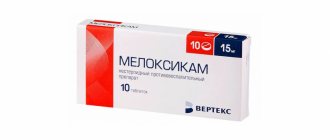Conjunctivitis is an inflammation of the thin mucous membrane covering the eyeball and the adjacent surfaces of the eyelids. This connective membrane, or conjunctiva, is normally transparent and colorless; it serves to moisten the cornea with a liquid mucous secretion, which is produced by the own glands of the conjunctiva in addition to the secretion of the main lacrimal glands. The conjunctiva receives nutrition from blood circulation in a network of small, almost invisible vessels, closely connected with the blood supply system of the eyelids. Inflammatory processes in this important structural element of the visual system manifest themselves as symptoms common to all conjunctivitis, due to the anatomical structure of the conjunctiva (redness of the eyes due to swelling and blood filling of the vascular network, characteristic turbidity, discomfort in the eye, increased lacrimation), and specific, due to cause and source of inflammation (presence/absence of purulent exudate, itching or pain, photophobia or swelling of the eyelids, etc.). Finally, some forms of conjunctivitis, for example, chlamydial in the early stages, can be practically asymptomatic for a long time.
Fig. 1 Preparations in the form of eye drops and ointments are the main method of treating conjunctivitis
The nature and pathogenic properties of the damaging factor, as well as the type of conjunctivitis (acute or chronic), determine the therapeutic approach. Thus, along with the elimination of general symptoms (anti-inflammatory, desensitizing, and, if indicated, moisturizing drugs) for conjunctivitis, etiopathogenetic measures should always be taken to eliminate the causes of inflammation. Therefore, the primary task of an ophthalmologist is usually to study the medical history, differentiate between various suspected types of conjunctivitis, and clarify diagnostics (for example, bacterial culture or serological testing to accurately identify the causative agent of the infectious-inflammatory process).
Thus, the clinical picture, the most likely dynamics of development, and the response therapeutic strategy depend on the etiological causes of conjunctivitis. In addition, the etiological criterion underlies the generally accepted typological classification of conjunctivitis. So, below are the most common types of conjunctivitis and the most effective means of treating it today. It should be emphasized that this information is provided for informational purposes only and can in no way be used as recommendations for self-medication.
Fig. 2 Antibacterial drops - a mandatory component of treatment
Infectious conjunctivitis
Statistically the leading variant of inflammation of the conjunctiva. Depending on the pathogen, it is divided into subgroups: viral, bacterial, fungal. Moreover, the incidence in children is distributed among these subgroups with approximately equal frequency, while in adults predominantly viral forms are found (over 80%). In the overall structure of morbidity, the proportion of fungal conjunctivitis (ophthalmomycosis) is increasing, which is explained, first of all, by the catastrophically irresponsible and uncontrolled use of antibiotics by the population (when the bacterial flora is suppressed, fungal cultures, including pathogenic ones, are activated).
Drugs for the treatment of viral conjunctivitis
With viral conjunctivitis (it can be caused by influenza viruses, herpes, etc.; in total there are about 40 species dangerous to humans), the main therapeutic goal is to stimulate and intensify the immune response. For this purpose the following are appointed:
- eye drops based on human interferon (Ophthalmoferon, Interferon, etc.);
- drugs that stimulate the production of endogenous, own interferon (Poludan, Tsitovir, Cycloferon);
- eye ointments (Bonafton, Acyclovir, Florenal, etc.);
- according to indications - vasoconstrictor and/or moisturizing drugs (“artificial tears”), similar to Vizin, Oksial, etc.
Drops and ointments for bacterial (purulent) form
For bacterial conjunctivitis, antibiotics are prescribed:
- drops (Albucid, Levomitin, Tsipromed, etc.);
- eye ointments (tetracycline, erythromycin, gentamicin, ofloxacin);
- tablet drugs (Doxycycline, Sumamed, Vilprafen, etc.; for chlamydia, Levofloxacin, Lomefloxacin).
Only a specialist can prescribe medications (and their dosage, frequency and duration of use) and evaluate the effectiveness of their use! By contacting our ophthalmology center, you can be sure of an individual approach and high results in the treatment of eye diseases in children and adults.
Treatment of fungal infections (mycoses)
For fungal conjunctivitis (ophthalmomycosis), treatment, as a rule, lasts much longer than for other infectious conjunctivitis, and includes specific antimycotic agents, and antifungal eye drops are practically not produced on an industrial scale in the world - they are prepared extemporaneously (as needed): Fluconazole , Amphotericin et al.
Some cases require additional intake of tablet forms of the antimycotic, as well as the simultaneous use of anti-inflammatory, antihistamine (antiallergic) and antibacterial drops and ointments.
Fig. 3 Eye drops are placed behind the eyelid at night and provide long-lasting effects
Eye drops and ointments for allergic conjunctivitis
In case of allergic conjunctivitis, it is necessary, first of all, to eliminate or minimize contact with the allergen. To relieve symptoms, antihistamine H1-blockers are prescribed to suppress the allergic reaction:
- drops Allergodil, Opatanol, Cromohexal, Lecrolin, Ketotifen, etc.;
- decongestant and vasoconstrictor drops (Vizin, Visomitin, Oksial);
- eye ointments, incl. hormonal (Hydrocortisone, Dexamethasone);
Tablets of systemic antihistamines (for example, Tavegil, Suprastin, Loratadine and their analogues) may also be prescribed.
TSIPROMED (drops)
Hi all!
There is probably no child who would not catch conjunctivitis at school or kindergarten. Not so long ago, in the fall, my eldest daughter complained that her eyes were itchy. I immediately realized that it was conjunctivitis. You can't confuse it with anything. Not only do the eyes itch and become inflamed and red, but pus also begins to accumulate in the eyes. Conjunctivitis is an infectious disease and, accordingly, a doctor is called only to your home and any trips to public places are excluded.
I called a doctor for my daughter only the next morning, when my daughter’s eyes were already very red and itchy terribly. Although I rule out self-medication, since I am not a doctor, sometimes, while you wait for the doctor, you need to take some measures to alleviate the child’s condition. br> To begin with, I gave my daughter Zodak to prevent allergic reactions.
The doctor, having examined her daughter and then our first aid kit, saw “Tsipromed”, which she recommended to us:
I don’t remember on what occasion it was purchased and for whom, but the expiration date allowed it to be fully used, especially since it was stored in the refrigerator and the packaging was not opened. In general, such drugs must be used within a month after opening.
The box contains instructions:
Like any medical drug, this one also has its contraindications: children under 1 year of age, pregnancy, breastfeeding.
We were prescribed to drop a drop into each eye 4 times a day.
The result was not long in coming; by the next morning the itching was almost gone, and the redness began to subside, although pus still appeared. When putting the drops in the eyes, it stings a little, but my daughter said that it can be tolerated)
And everything would be fine, but this plastic bottle just annoyed me. Well, can’t the manufacturer also worry about ease of use?
The bottle is small, but it is enough for a course of treatment:
What made me uncomfortable was this “nose”, which must first be cut off. Of course, I tried to pierce it with a needle to make a hole, but nothing came of it, so I just had to cut off the top. It turned out barbaric, but that’s how it happened(
With such a hole, instead of one drop, sometimes it was possible to bury more than necessary.
Such an economy bottle is probably the only negative. We defeated conjunctivitis, but...
Unfortunately, not all doctors know this, or they know, but do not say that if there is more than one child in a family, then even if only one child is sick, then treatment is prescribed for the second child too. And the third and fifth. In general, having cured the eldest daughter, two days later conjunctevitis came to the youngest daughter (((Our youngest, who is 2.5 years old, I also began to instill Tsipromed. With the youngest it was even more difficult, since she could not overcome desire to scratch the eyes. Well, we all know that hands cannot always be clean, and accordingly, our treatment took a little longer.
The second circle of hell has been completed!
Only from a friend of a mother with many children did I learn that conjunctivitis is treated for all children in the family together and at the same time, and not in turn.
And when my eldest daughter again complained that her eyes were itching, I already ran to the pharmacy and began putting drops in the eyes of both daughters together. And only then did we get rid of this misfortune. The second time I did not risk giving Tsipromed to children, since it is known that it is not recommended to give the same drug for a long time, I took another one, but I will write about it in the next review.
Of course, I recommend Tsipromed as an excellent remedy for conjunctivitis!
Thank you for your attention to my review! Bye bye!!!
Medicines for chronic conjunctivitis
Chronic conjunctivitis, as a rule, means irritation and inflammation of the conjunctiva caused by prolonged exposure to harmful physical or chemical factors, or active foci of chronic infection in other organs.
Against the background of long-existing inflammation, the composition of the tear film and the amount of tears changes, and dry eye syndrome (DES) develops, which over time can develop into a severe form - corneal-conjunctival xerosis. In this case, epithelial defects occur (recurrent erosion), and a corneal ulcer may develop (a serious disease that threatens complete blindness).
Therefore, it is important not only to treat the cause of conjunctivitis, but also to use tear substitutes.[1]
Fig. 4 Tear substitutes (moisturizing drops) used for chronic conjunctivitis
“Cationorm” is a unique cationic emulsion that is suitable for people with glaucoma, blepharitis, allergic conjunctivitis and people using hormone replacement therapy (menopausal hormones, oral contraceptives). The drug restores all three layers of tears and prevents itching and redness of the eyes. Cationorm helps with severe pain and dryness in the eyes that appears in the morning, and quickly relieves discomfort. Drops can be applied directly to lenses. Drops should be used 1-2 drops into the eye sac 1-4 times a day.[2]
"Ocutiarz" - eye drops based on hyaluronic acid (a natural component of human tears) with an ultra-high molecular weight help to quickly relieve dryness and eliminate pain in the eyes that occurs occasionally after prolonged visual work (computer syndrome in office employees, motorists/motorcyclists, frequent fliers , travelers, students). In addition, the drops are suitable for people after ophthalmic surgery and people who have recently worn contact lenses. They do not contain preservatives and can be in direct contact with lenses. Directions for use: 1-4 times a day, 1 drop.[3]
“Oftagel” is an eye gel with carbomer in maximum concentration that moisturizes the ocular surface for a long time, eliminates pain and lacrimation of the eyes, and does not require frequent instillation; it can be used once a day as a means of additional eye hydration. Suitable for people who do not have the opportunity or desire to use drops during the day. Use 1 drop of the drug 1 – 4 times a day, depending on the severity of symptoms.[4]
In conclusion, the following points need to be emphasized:
Modern drugs used in ophthalmology, as a rule, have a wide spectrum and combined nature of action, so the same medicine can be prescribed for different types and forms of conjunctivitis. On the other hand, each variant of the inflammatory process requires a special approach - for example, a herpes viral infection is treated slightly differently than a “simple” adenoviral infection.
Further, there are very dangerous, but statistically rarer, or not typical for our latitudes forms of conjunctivitis - parasitic, epidemic Koch-Wicks, etiologically unclear, mixed (involving the cornea, eyelids, etc.) - therapy for which is beyond the scope of this article.
Finally, many of the drugs described above have absolute or relative contraindications, i.e. should be excluded or prescribed in sparing dosages (or under special medicinal cover) in the treatment of conjunctivitis in such categories of patients as children, pregnant or lactating women, people with weak immunity, patients with severe somatic pathology, etc. Considering the huge number of such clinical, therapeutic , pharmacological nuances, any attempts at self-medication, incl. "folk" means. Conjunctivitis of any genesis (origin) is not as harmless as it seems to many; in some cases, it poses a direct danger to vision, which is why timely seeking ophthalmological help is so important.
Material prepared by: Sagonenko Dmitry Alekseevich
Ophthalmologist, site consultant
List of sources used
- Kovalevskaya M.A., Maychuk D.Yu., Brzhesky V.V. Red eye syndrome. Practical guide for ophthalmologists. Moscow, 2010
- Brzhesky V.V., Algorithm for choosing tear replacement therapy in patients in outpatient practice, Clinical Ophthalmology 2021, No. 1
- Instructions for use of Ocutiarz® ophthalmic moisturizing solution
- Maychuk Yu. F., Yani E. V., Maychuk D. Yu. Artificial tear preparation Oftagel in the treatment of dry eye syndrome after epidemic keratoconjunctivitis / Breast Cancer “Clinical Ophthalmology”, No. 4 of November 12, 2001, p. 172.
- Back
- Forward
Add a comment
Tsipromed in the treatment of infectious eye diseases
DV Katz Department of Ophthalmology of medical faculty, Russian State Medical University, Moscow Literary review presents data of efficacy and safety of Cipromed usage both in monotherapy and in comparison with other topical antibacterial drugs.
Fluoroquinolones were synthesized by introducing one, two or three fluorine atoms into the naphthyridine quinolone molecule. In their properties, they differ significantly from non-fluorinated derivatives for the better. Fluoroquinolones have a broad antimicrobial spectrum of action, high bioavailability, good pharmacokinetic properties and low toxicity. All fluoroquinolones have a single mechanism of action - inhibition of the bacterial enzyme DNA gyrase (topoisomerase II), which determines the processes of DNA biosynthesis and cell division. Fluoroquinolones have a fairly pronounced post-antibiotic effect (the antimicrobial effect continues after the drug is removed from the environment). The duration of the post-antibiotic effect is determined by the type of microorganism and the value of the previously effective concentration. In the form of a 0.3% solution, ciprofloxacin is widely used to treat a number of eye infections resulting from eye surgery and penetrating eye injuries. Ciprofloxacin is active in vitro against Staphylococcus and Bacillus strains, as well as most gram-negative microorganisms, including Pseudomonas strains. Activity of ciprofloxacin against gram-negative bacteria and staphylococcus (minimum inhibitory concentration (MIC), mg/l): Citrobacter spp. 0.008–0.03 Enterobacter spp. 0.03–0.06 E. coli 0.004–2 Klebsiella spp. 0.06–0.25 Proteus spp. 0.03 Salmonella spp. 0.015–0.25 Shigella spp. 0.015–0.25 H. influenzae 0.008–0.032 P. aeruginosa 0.25–2 S. aureus 0.25–1 Streptococcus spp. 0.5–8. In addition, ciprofloxacin has sufficient activity against gram-positive cocci - group A, B, C streptococci, Streptococcus faecalis, P. aeruginosa; chlamydia and mycoplasma. When 0.3% ciprofloxacin was prescribed, punctate superficial keratitis was 26.1%, precipitate deposition – 11.1%, irritation – 11.1% [16]. Less than 1% and more than 0.1% of patients experienced such atypical manifestations of side effects as: the appearance of crusts on the edges of the eyelids, dry eye syndrome, discharge, keratitis, lacrimation, photophobia, pain, decreased vision, chemosis, infiltrates corneas, blurred vision, allergic reaction, swelling of the eyelids, conjunctival hyperemia, numbness, conjunctivitis, pinpoint erosion of the epithelium. Clinical data obtained from the use of ciprofloxacin in general practice made it possible to develop a form for use in ophthalmology - a 0.3% solution of ciprofloxacin in the form of eye drops (Tsipromed). The drug Tsipromed is used for infectious and inflammatory diseases of the eyes (acute and subacute conjunctivitis, blepharitis, blepharoconjunctivitis, keratitis, keratoconjunctivitis, bacterial corneal ulcer, chronic dacryocystitis, meibomitis (barley), for infectious eye lesions after trauma or foreign bodies), in order to prevent – and postoperative prevention of infectious complications in ophthalmic surgery. Recommended use of Tsipromed for mild and moderately severe infections: instill 1-2 drops into the conjunctival sac of the affected eye every 4 hours, for severe infections - 2 drops every hour. After the condition improves, the dose and frequency of instillations are reduced. For bacterial corneal ulcers, Tsipromed is used 1 drop every 15 minutes for 6 hours, then 1 drop every 30 minutes during waking hours; on day 2 – 1 drop every hour during waking hours; from days 3 to 14 – 1 drop every 4 hours during waking hours. If epithelization has not occurred after 14 days of therapy, treatment can be continued. To prevent infection and a calm course of the postoperative period after surgical interventions, Tsipromed is prescribed 4–8 times a day for the entire period of the postoperative period, usually from 5 days to 1 month. Ciprofloxacin has an antibacterial effect at concentrations from 0.001 to 2 mg/ml. The effective time of action of Tsipromed in the conjunctiva is from 15 minutes to 2 hours, in the cornea – from 10 minutes to 6 hours, in the moisture of the anterior chamber – from 10 minutes to 4 hours [1]. The effectiveness of Tsipromed in the treatment of eye infections is associated, in particular, with its good penetration into biological fluids, due to its lipophilicity. Tsipromed penetrates into the aqueous humor and vitreous body. Average concentrations after topical use are 0.44±0.07 µg/ml in aqueous humor and 0.22±0.04 µg/ml in the vitreous. Differences between ciprofloxacin concentrations in aqueous humor and vitreous humor may be due to more barriers to penetration and a higher dilution factor, which increases due to the large volume of vitreous humor [2–4]. In the presence of an inflammatory process, the concentration of ciprofloxacin increases both in the aqueous humor and in the vitreous body [5,6]. The drug is excreted primarily through the kidneys (up to 50%). Residual concentrations of ciprofloxacin can be determined within 24 hours after instillation. Tsipromed is an effective antimicrobial agent in comparison with most locally used antibacterial agents. In a comparative study of the penetration ability of ofloxacin, ciprofloxacin and norfloxacin in patients with bacterial keratitis, the concentration of all three antibiotics in the cornea exceeded the MIC for most gram-negative bacteria, with the exception of Acinobacter spp. and P. aeruginosa, for which only the concentration of ciprofloxacin exceeded the MIC. A study showed that ciprofloxacin and ofloxacin have some advantage over norfloxacin in terms of creating sufficient concentrations in the cornea [7]. The transcorneal penetration of ciprofloxacin, ofloxacin and norfloxacin into the aqueous humor was studied in patients receiving the drug with different dosage regimens. The most effective regimen was one drop every 15 minutes for 2 hours before surgery. Additional administration of the drug the day before surgery did not lead to an increase in the level of antibiotics in the aqueous humor [15]. The most common causative agents of bacterial conjunctivitis are H. influenzae and S. pneumoniae. Ciprofloxacin, along with rifampicin and chloramphenicol, exhibits the greatest clinical effectiveness against these pathogens [8]. In the treatment of bacterial conjunctivitis and blepharitis with a 0.3% solution of ciprofloxacin and a 1% solution of rifampicin, clinical improvement was observed in more than 90% of patients, however, the number of completely cured patients by the 7th day of drug use was 53% for ciprofloxacin, and 23% for rifampicin . When comparing the effectiveness of ciprofloxacin and tobramycin in patients with blepharitis and blepharoconjunctivitis, 7 days after the start of treatment, a bacteriological study determined a decrease in the number of potentially pathogenic bacteria in 93.7% of cases (ciprofloxacin) compared to 88.9% (tobramycin) [12] . A study conducted by Adenis JP, Colin J. et al in 1995 compared the local antibacterial effect of a 0.3% solution of ciprofloxacin with placebo or a 0.3% solution of tobramycin. Ciprofloxacin provided a reduction in all isolated bacterial strains, confirming its broad antibacterial spectrum and potential effectiveness in the treatment of external eye infections [11,13]. In a comparative study of the effectiveness of ciprofloxacin, gentamicin and tobramycin, it was found that against most pathogens of eye infections, the effectiveness of ciprofloxacin in vitro is higher than that of gentamicin and tobramycin, but the effectiveness against staphylococcal strains of ciprofloxacin is equivalent to gentamicin and tobramycin [9]. The effectiveness of ciprofloxacin in the treatment of bacterial keratitis refractory to conventional therapy has also been confirmed. Successful cure was observed in 72.7% of patients who were prescribed the drug [10]. In the case of the treatment of bacterial corneal ulcers, monotherapy with a 0.3% solution of ciprofloxacin corresponds to therapy with a combination of tobramycin and cefazolin. Cure was observed in 91.5% of cases when ciprofloxacin was prescribed compared to 86.2% with standard treatment [14]. There has also been a large number of studies done on the safety of ciprofloxacin solution used to treat eye infections. The drug is well tolerated by patients. Taking into account the data from clinical studies, the drug Tsipromed, 0.3% eye drops, is an effective and safe drug and can be recommended for widespread use in ophthalmological practice.
The article was accepted for publication on May 30, 2007.
References 1. Snyder–Perlmutter LS; Katz HR; Melia M. Effect of topical ciprofloxacin 0.3% and ofloxacin 0.3% on the reduction of bacterial flora on the human conjunctiva. /J Cataract Refract Surg. 2000; 26(11): 1620–5. 2. Osman Cekic b, Cosar Batman, Umit Yasar et al, Human aqueous and vitreous humor levels of ciprofloxacin following oral and topical administration./ Eye(1999) 13, 555–558. 3. Osman Cekic, MD a; Cosar Batman et al, Comparison of aqueous humor and vitreous humor levels of two 0.3% ciprofloxacin eye drops./ Can J Opthalmol 1998;33: 373–6. 4. Cekic O; Batman C; Yasar U; Basci NE; Bozkurt A; Kayaalp SO Comparison of aqueous humor and vitreous humor levels of two 0.3% ciprofloxacin eyedrops. /Can J Ophthalmol. 1998; 33(7):373–6. 5. Ozturk F; Kurt E; Inan UU; Kortunay S; Ilker SS; Baci NE; Bozkurt A. The effects of prolonged acute use and inflammation on the ocular penetration of topical ciprofloxacin. Int J Pharm. 2000; 204(1–2): 97–100. 6. Ozturk F; Kortunay S; Kurt E; Ilker SS; Basci NE; Bozkurt A. Penetration of topical and oral ciprofloxacin into the aqueous and vitreous humor in inflamed eyes./ Retina. 1999; 19(3):218–22. 7. Jeremy P Diamond, Les whites, John P Leeming, H Bing Hoh et al. Topical 0.3% ciprofloxacin, norfloxacin and ofloxacin in the treatment of bacterial keratitis: a new method of comparative evaluation of ocular drug penentration. British Journal of Opthalmology, 1995, 79, 606–609. 8. Orden Martinez B; Martinez Ruiz R; Millan Perez R. Bacterial conjunctivitis: the most common pathogens and their antibiotic sensitivity. /An Pediatr (Barc). 2004; 61(1):32–36. 9. Sun XG, Wang ZQ, Li R, Chen L, Jin XY, Luo SY. In vitro fluoroquinolone resistance in ocular bacterial isolates./Zhonghua Yan Ke Za Zhi. 2003 Mar;39(3):163–6. 10.Tsai AC, Tseng MC, Chang SW, Hu FR. Clinical evaluation of ciprofloxacin ophthalmic solution in the treatment of refractory bacterial keratitis. /J Formos Med Assoc. 1995 Dec;94(12):760–4. 11. Adenis JP, Colin J, Verin P, Saint–Blancat P, Malet F. Ciprofloxacin ophthalmic solution versus rifamycin ophthalmic solution for the treatment of conjunctivitis and blepharitis. /Eur J Ophthalmol. 1995 Apr–Jun;5(2):82–7. 12. Bloom PA, Leeming JP, Power W, Laidlaw DA, Collum LM, Easty DL. Topical ciprofloxacin in the treatment of blepharitis and blepharoconjunctivitis./ Eur J Ophthalmol. 1994 Jan–Mar;4(1):6–12. 13. Leibowitz HM. Clinical evaluation of ciprofloxacin 0.3% ophthalmic solution for treatment of bacterial keratitis. Am J Ophthalmol. 1991 Oct;112(4 Suppl):34–47. 14. Robert Hyndiuk, Richard Eiferman et al, Comparison of Ciprofloxacin ophthalmic solution 0.3% to fortified Tobramycin–Cefazolin in treating Bacterial Corneal ulcers./ Opthalmology volume 103, Number 11, Nov 1996, pp 89–98. 15. J Von Keyserlingk, R Beck, U Fischer et al Penetration of ciprofloxacin, norfloxacin and ofloxacin into aqueous humor of patients by different topical application modes. / Eur J Clin Pharmacol (1997) 53: 251–255. 16. Booranapong W, Kosrirukvongs P, Prabhasawat P, Srivannaboon S, Suttiprakarn P Comparison of topical lomefloxacin 0.3 per cent versus topical ciprofloxacin 0.3 per cent for the treatment of presumed bacterial corneal ulcers./ J Med Assoc Thai. 2004 Mar;87(3):246–54.




![Table 1. Comparison of the results of treatment with Tribestan for men with oligoasthenozoospermia [7] with mod.](https://irknotary.ru/wp-content/uploads/tablica-1-sravnenie-rezultatov-lecheniya-tribestanom-muzhchin-s-oligoastenozoospermiej-7-330x140.jpg)


